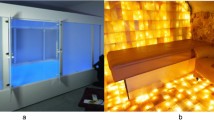Abstract.
Gravity appears to alter thermoregulation through changes in both the regulated level of body temperature and the rhythmic organization of temperature regulation. Gravity has been hypothesized to have an associated metabolic cost. Increased resting energy expenditure and dietary intake have been observed in animals during centrifuge experiments at hypergravity. Thus far, only animals have shown a corresponding reduction in metabolism in microgravity. Altered heat loss has been proposed as a response to altered gravitational environments, but remains documented only as changes in skin temperature. Changes in circadian timing, including the body temperature rhythm, have been shown in both hypergravity and microgravity, and probably contribute to alterations in sleep and performance. Changes in body temperature regulation may result from circadian disturbance, from the direct or indirect actions of gravity on the regulated temperature, or from changes in thermoregulatory effectors (heat production and heat loss) due to altered gravitational load and convective changes. To date, however, we have little data on the underlying thermoregulatory changes in altered gravity, and thus the precise mechanisms by which gravity alters temperature regulation remain largely unknown.
Similar content being viewed by others
Author information
Authors and Affiliations
Additional information
Electronic Publication
Rights and permissions
About this article
Cite this article
Robinson, E., Fuller, C. Gravity and thermoregulation: metabolic changes and circadian rhythms. Pflügers Arch - Eur J Physiol 441 (Suppl 1), R32–R38 (2000). https://doi.org/10.1007/s004240000329
Published:
Issue Date:
DOI: https://doi.org/10.1007/s004240000329




